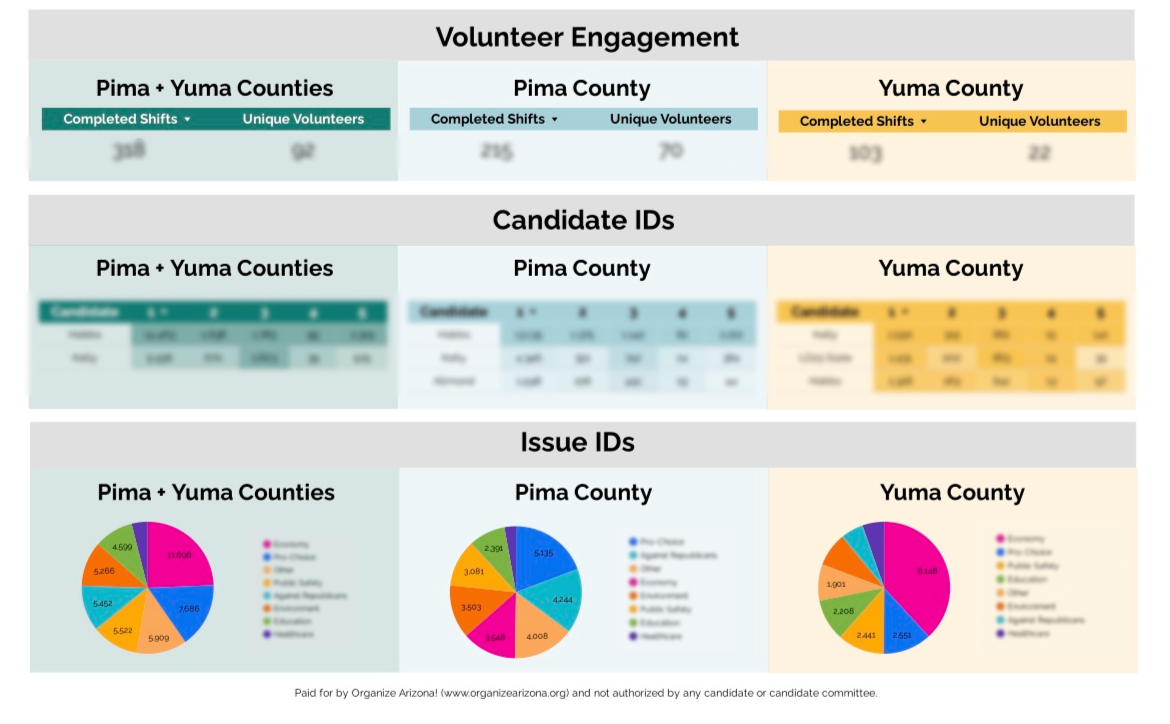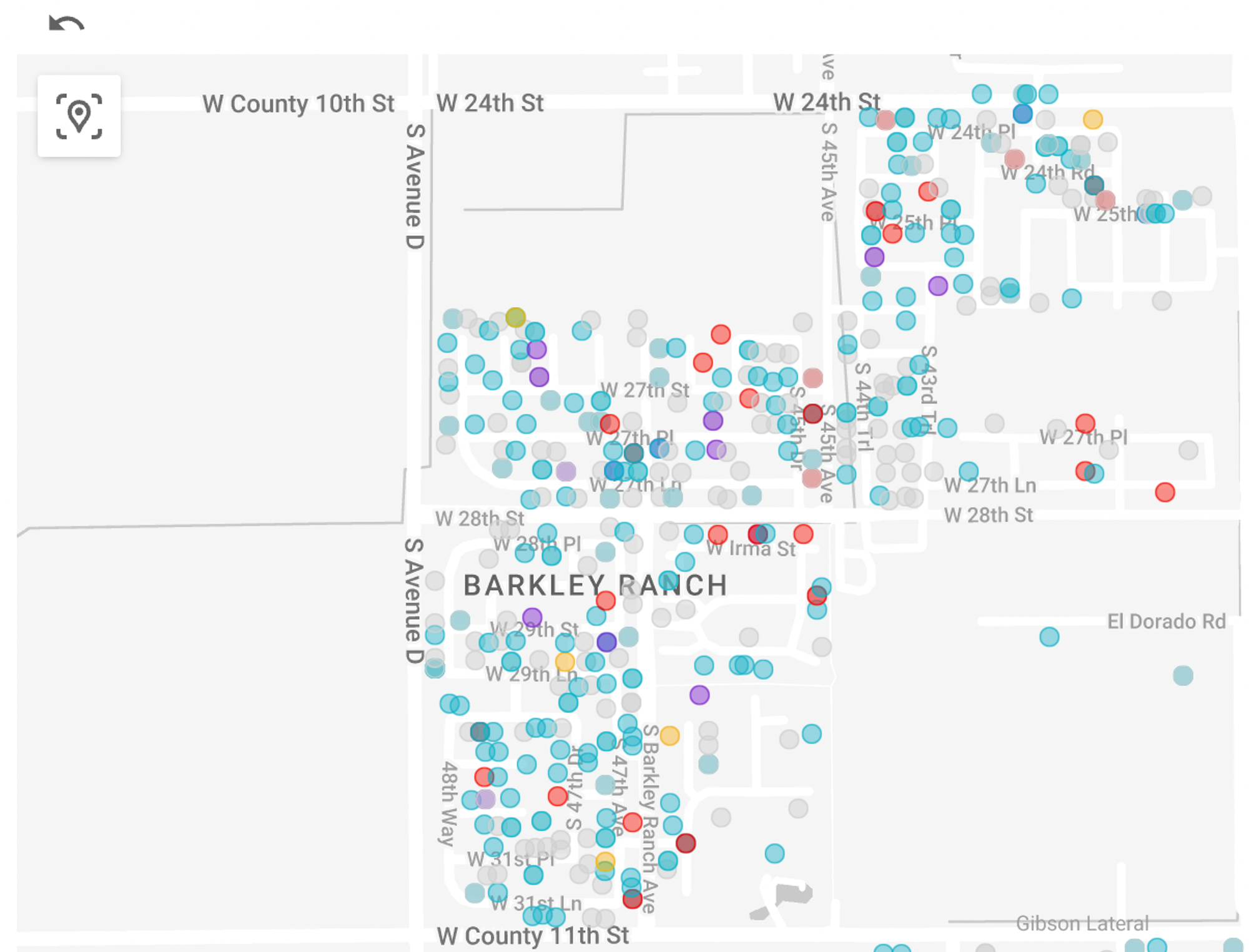Organize! Arizona: Case Study
The Challenge
In 2022, Rural Arizona Action (RAZA) launched Organize Arizona! (OAZ), a field research experiment to test the effectiveness of local, precinct-level organizing in two counties in Arizona.
Early on, the OAZ team identified the need for an accessible data infrastructure to allow for data-informed decision-making. But as a new program, OAZ was starting from scratch, which necessitated establishing data partnerships and engineering a usable data pipeline.
The Approach
CTA partnered with OAZ to assess their data needs, facilitate crucial conversations and partnerships, and engineer a robust and stable data infrastructure — removing friction points and limiting costs.
1. Data Needs Assessment
To start, CTA worked with the OAZ team to understand their data goals and existing systems. Having worked with other partners with similar programmatic needs, the CTA team quickly identified which partnerships and data sources would be required to support OAZ’s organizing work.
2. Supporting Partnerships
With an accounting of key data sources and needed partnerships determined, the CTA team got to work establishing relationships with data partners, namely with America Votes, which could grant OAZ access to VAN data as an affiliate of RAZA. The CTA team also partnered with VAN to pilot a new, faster way to sync data from VAN’s systems straight to BigQuery. Over the first half of 2022, CTA established and built these partnerships, paving the way for engineering a seamless data infrastructure.
3. First-of-its-Kind Data Infrastructure Engineering
With AV’s support and coordination, CTA and VAN set up a pipeline straight from AV VAN to CTA BigQuery, delivering data in nearly real-time. CTA’s tools made it easy for OAZ to merge VAN data with their other data sources (like Google Sheets) into a central hub — the Progressive Action Database (PAD, CTA’s data warehouse). With the data systems flowing and merging, the OAZ team had what they needed to produce robust and comprehensive reporting, much faster and with more timely data.
The Impact
With a centralized data hub powered by CTA, the Organize Arizona! team was able to save time and create near real-time dashboards to empower data-driven programmatic decision-making.
1. Reporting Time Savings
Before OAZ’s data was synced in PAD, it would take the OAZ team 1.5 hours every morning to manually create a report for staff and volunteers that pulled data from soft reports in Google Sheets and manual VAN exports. While this served as a workaround, it was labor- and time-intensive, and the data wasn’t always up to date.
Once data was synced into and centralized in PAD, the OAZ team could use SQL and Looker Studio to create automated dashboards with multiple views. These dashboards were accessible to organizers, regionals, donors, campaign managers, consultants, volunteers, and staff — giving everyone one place to see the campaign’s progress.
Programmatic Summary Dashboard in Looker Studio created by Ashley Brennan, Data and Field Director, Organize Arizona!
The team also used the data to create informative maps, like this example that visualizes the party breakdown of voters in OAZ’s canvassing universe.
Targeted Universes Mapped by Party Breakdown: Overview + Zoomed In
2. A New Hourly Sync from VAN to Drive Programmatic Decision-Making
Thanks to the labor required to update data syncs manually, pre-CTA data in reports could be up to a day and a half behind, making it hard for the team to make real-time data-driven decisions.
Through CTA’s partnership with VAN, the team piloted a revolutionary data sync from VAN straight to BigQuery, which meant data was updated hourly — something organizations had never previously had access to.
“We got to the point where I would see organizers’ initials pop up in the dashboard right before an update because they knew the data would sync on the hour. It meant these organizers were able to see in real-time how they were tracking against their goals. I had never seen that before.”— Ashley Brennan, OAZ Data and Field Director:
This real-time data meant that Regional Field Directors could immediately make the call to move organizers and volunteers who were out canvassing to other precincts or to shift phone and text bank efforts to a refreshed list that included folks with outstanding ballots. The data gave RFDs and organizers confidence that they were using the last few weeks, days, and hours of the campaign most effectively — and to have the biggest possible impact on the outcome of the Gubernatorial race.
Targeted Universes Mapped by Party Breakdown: Overview + Zoomed In
3. Cost Savings that Can Go Back into Program
CTA’s prices for the data storage, access, and integrations for an organization like OAZ! start at $175/month, marking huge savings from what most organizations pay for this type of data engineering and storage. Organizations can then pass these tremendous savings back to support more in-state programming.
To learn more about how OAZ organized data to support a successful field program, check out Ashley Brennan’s presentation here.
Do you have a similar challenge at your organization or want to learn more? Get in touch and we’d be happy to talk through solutions. Email help@techallies.org to learn more.







